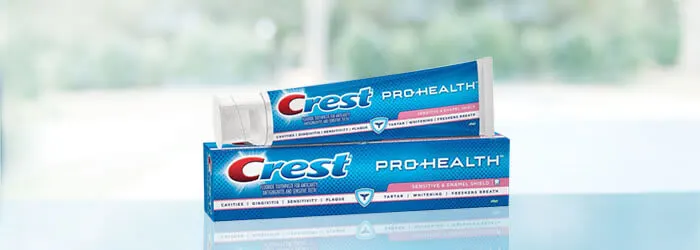Best Toothpaste for Sensitive Teeth
Sensitivity, also known as dental hypersensitivity or dentinal hypersensitivity, is the pain experienced, usually when eating or drinking. Most people have experienced a form of tooth pain at some point in their lives, so if you’re experiencing sensitivity, you’re not alone. Fortunately, there are several ways of treating sensitive teeth. This article will help you find the best sensitivity toothpaste for your needs.
Tooth Sensitivity: An Overview
In the inner structure of the tooth lies the pulp, which is a mixture of organic matter––blood vessels that feed the tooth and nerves. Surrounding the pulp is a layer of a substance called dentin, comprised of a hard mineral. Running throughout the dentin are thousands of very thin tubes called 'tubules'. Tubules provide a channel from the inside of the living tooth and nerves to the outer enamel surface. The outer layer of the tooth crown is made of a very hard enamel layer, which is the hardest structure in the human body. The enamel only covers the outer surface of the tooth above the gum line, and does not cover the area below the gum line called the tooth root, which is covered by a structure called cement.
Sensitivity may occur when the tubule channels become exposed, as they are vulnerable and easily irritated by different stimuli. In healthy teeth, the tubules are covered by the gums and cement in the tooth root, and below the enamel layer in the outer crown surface of the tooth.
The primary cause of tubule exposure is gum recession and wear on tooth enamel or cement. As bacteria in plaque cause gum problems like gingivitis, the gum is swollen and inflamed. If unchecked, this causes the structures holding the gum to the tooth root to weaken and detach. Eventually, this might lead to a condition called periodontitis, which is when the gum becomes detached from the tooth and recedes down the tooth root. As the root is exposed, the cement which is less durable than the enamel covering the dentin on the crown of the tooth, wears off and the tubules become exposed––this leaves open dentin tubule holes that may cause sensitivity issues.
Choosing A Sensitivity Toothpaste
Sensitivity toothpastes are specially formulated to address this problem. They contain ingredients, such as potassium nitrate or stannous fluoride, to help prevent sensitivity so you feel little or no discomfort when brushing.
There are two major routes to stopping the pain of sensitivity: numb the nerves, or block the tubule holes. The following ingredients have proven highly effective in treating sensitivity in most people.
Ingredients That Provide Sensitivity Relief
Potassium
Potassium interacts at the nerve synapses, preventing the nerve from passing the pain signal across the synapse, numbing the nerve so that you do not feel the pain. It is not instant relief, and it also does not treat the root causes of further sensitivity developing.
Stannous Fluoride Complex
Another solution for sensitive teeth is using a toothpaste which features Stannous Fluoride Complex. One highly recommended stannous fluoride toothpaste is Crest Pro-Health HD Daily Two-Step System. Toothpaste for sensitive teeth with stannous fluoride helps to block the tubule holes, stopping the pain of sensitivity and making it possible to enjoy foods and drinks without feeling uncomfortable. Stannous Fluoride Complex also helps prevent some of the root causes of sensitivity developing in the first place.
Sensitivity toothpastes may also feature other benefits such as tooth whitening. Many tooth-whitening toothpastes, such as the Crest Pro-Health Sensitive & Enamel Toothpaste are now formulated for sensitive teeth. Additionally, some electric toothbrushes may feature a sensitive setting that can be used in conjunction with the sensitivity toothpaste of your choice. Combining these sensitivity options will help you feel comfortable enough to maintain your oral care routine of twice-daily tooth brushing and daily flossing.




